This month is a guest blog from Morris “Mort” Bloom.
Some of my most memorable days in the bush were marking road lines with Mort. My role was to source timber mostly from private property for the logging contractors under my supervision. Some were easily accessible across grass paddocks in the summer. However, the wet winter lasted at least eight months in north-west Tasmania. So I had to keep the contractors working by supplying winter coupes serviced by all-weather gravel roads at a cost of between $30-50,000 a kilometre. The challenge was finding and securing timber that could be harvested and accessed economically in winter.
By this time, the AFH freehold land was mostly roaded, so most of Mort’s major summer construction jobs were associated with the private properties I secured. Hence, we spent a lot of time in winter marking road lines. Some areas were difficult to access. We had at least a dozen road lines marked on some properties before finalising a preferred route.
Mort, unfortunately for me but fortunately for the business and the logging crews, stuck to his non-negotiable rules when we used to mark out road lines together in the field.
One was a maximum of 10 per cent grade for Class 3 gravel roads, and the other was his strange reluctance to put in switchbacks. Every time we ran out of country to run a grade at 10 per cent, my solution to Mort was a simple “let’s just put in a switchback”. I wasn’t particularly interested in his “you can’t put one here. There isn’t enough flat ground” excuse. I don’t think he appreciated me telling him he was paid to find solutions to my access problems.
I also relied heavily on Mort to calculate the roading costs for my submissions. But unfortunately, he wouldn’t yield to my subtle or not-so-subtle encouragement to fudge costs a little so that I could meet the maximum $4 a ton economic threshold for some roads. Consequently, I had to be a bit creative with the estimated volumes to maximise my winter logging options each year and ensure I got a gravel access road.
While we had many challenges along the way, like for example a major winter road lasting just two days and three truckloads, we managed to work harmoniously together for over ten years. I am very thankful I had Mort by my side to help me meet my responsibilities as a harvesting forester in a high-production business in north-west Tasmania.
Here is his story.
I started working at 15 years old, driving trucks for a small cartage contractor servicing local farmers carting hay, cattle and potatoes. It was my job to load and meet a licensed driver on the road as I wasn’t licensed then. When I was 17, I operated a 922 wheeled loader at the Hatfield River and the Linda Valley on the west coast for a crushing plant owned by Associated Forest Holdings (AFH) and operated on contract by Perc Reynold. Whilst working in the Linda Valley, we stayed or camped at the old Gormanston pub.
My logging experience
I commenced work with AFH in February 1972. I was assigned to work and train under logging contractor Frank Sheridan, who later became a Logging Supervisor and Safety Officer. Frank taught me the art of steep country logging in the 1926 APPM Concession Crown lands near Parrawe and Hellyer Gorge.
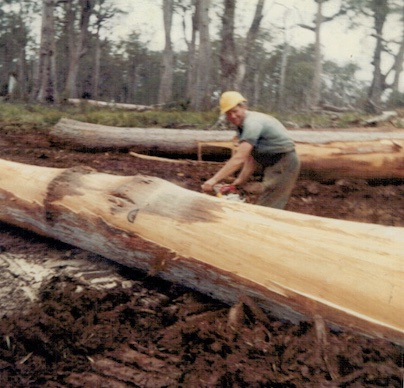
We arrived at Quarry Road at about 7.30 am on my first day. There was a D7E bulldozer sitting on the side of the road. Frank dropped me off and said, “start the machine and walk it on the road till you find me”. I had never operated this type of machine before, and it was a pilot motor-assisted start unfamiliar to me. I asked Frank to help me get it started. He said, “work it out yourself”, and drove off. Luckily, I had enough knowledge to get it going after about 15 minutes of trial and error. I had to walk the machine about three kilometres along the road, where I found Frank placing a few pieces of flagging tape into the bush.
After a brief conversation and a cuppa, Frank said, “follow me”, and we walked off into the bush. It was very steep country, and after a couple of hours plodding up and down a couple of ridges, we arrived back at the dozer. I was stuffed already; Frank looked at me and said, “you wait here, I will go and track this ridge, and you should be pulling logs out within two hours”. To my amazement, I was getting my first lesson in the art of steep country logging. I soon discovered this was not for the faint-hearted, but Frank was a seasoned faller and an excellent tutor, so I learned quickly.
After Frank’s promotion, I spent the next two years pulling logs for contract fallers such as Brian Radford, Royce Radford, Jimmy Duniam and George Turner.

Mort and his D7. Photo courtesy Morris Bloom.
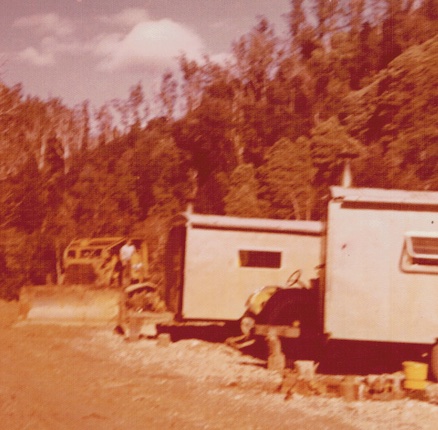
Here is a story about the Radfords – Royce and brother Ivan or Tug, who was a dozer operator. We used to all camp in little humpies on wheels. One night the Radford’s went to Waratah for a meal and a couple of light ales. While they were away, someone had removed the block, which was used as a stabiliser at the rear of the humpy. Tug got into his bunk which was at the back of the van. About five minutes later, Royce stripped off and bounced into the top bunk. Next thing up she went, almost standing on its end.
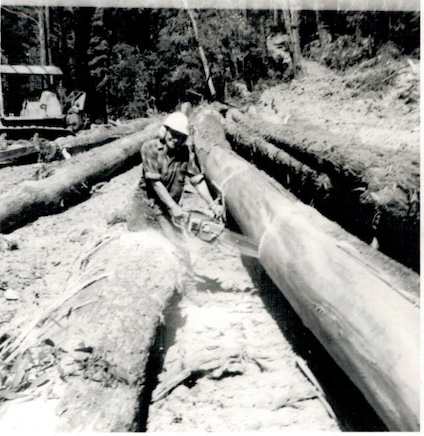
With no clothes on and the frost starting to settle outside, Royce struggled to get to the door, got himself out, and jumped down onto the ground with many expletives coming from his mouth. All of this was directed at brother Tug. They didn’t talk for days after.
While logging in Parrawe, I also learned the art of constructing and loading logs over a skidway, mainly producing and loading four loads or about 120 tonnes per day. It was hard work, especially in the winter months.
Roading work
After about three years of logging, I was asked to join the roading crew as a relief D9 operator. After the retirement of the regular operator, Jack Martin, I stayed on as the second operator to Mervyn Pyke. Mervyn taught me all I know about roading and quarry operations. I recall one job at Junction Road close to where the Hellyer and Arthur Rivers meet. It was very steep, and one area had developed a huge landslip. Whilst carrying out repairs to this slip area, AFH agreed to have the job filmed.
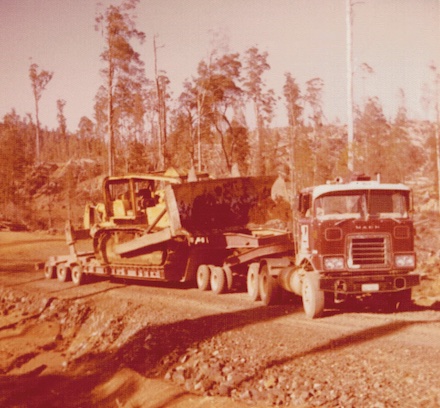
The film crew were busy filming Mervyn coming off the slip area, onto the road and then walking the machine along the road towards the camp. Mervyn’s Blue Datsun ute was parked on the side of the road, but Mervyn couldn’t see it due to the large U blade on the machine. I could see what would happen and started waving to get his attention. However, he ignored my waves as he was focused on the film crew. Next, the tip on the blade of the machine caught the side of his ute.
By the time Mervyn realised what was happening, it was too late. The blade tip had opened at least half the length of his ute.
Seeing this, Mervyn immediately pulled on the steering clutch that hard it threw the ute two metres right to the edge of a steep drop. I can’t repeat the expletives that came from Mervyn, and to make matters worse, the sound tape that the film crew had attached to the machine had to be wiped. Mervyn was far from happy that day. However, the company did come good with compensation for his ute. We didn’t have a company vehicle in those days, and we were expected to use our cars for a small kilometre rate.
Another day, I was working with Mervyn at a quarry on Check Road alongside the Arthur River. Again, very steep country. Mervyn had completed his shift, backed the machine down the access track to the road, clipped the brake on, and jumped off. I came out to start my shift, heard a click, and the machine started moving backwards, gathering momentum quickly. I had no time to get aboard. The D9 looked like a giant crab going back with its rippers and blade in the air. It went off the steep track across the road and over the edge of the road, travelled about 40 metres down the bank, and finished in the middle of the Arthur River. Miraculously it didn’t hit one tree or stump on the way down the slope. Mervyn looked at me and said, “well, it’s your shift. You go and retrieve the big girl”.
What could I say? He was the senior operator. I managed to wade out to her and carve a track back to the road with no damage to the machine. Whilst this was not my fault, Mervyn then instructed me to try and leave the machine on level ground and all equipment grounded and brakes locked on. We spent the next hour manufacturing a safety latch for the brake lock.
AFH purchased this D9 to carry out roading in the steeper areas and procurement of surfacing material. Also, when not roading, it was used on land clearing for the plantation programs. It also did a few outside contract jobs, such as constructing a portal at the Hellyer Mine and Bass Highway road and quarry works at Devonport and Ulverstone for The Department of Main Roads.
A stint in Papua New Guinea
In May 1977, while operating the D9, I was asked if I would consider relocating to Papua New Guinea (PNG) as a roading supervisor to replace another company employee who had to leave PNG in unusual circumstances. I only had a week to decide and give an answer. After plenty of family discussions with my wife Ros, we decided it would be an excellent opportunity to travel and a good career move. However, we had many hurdles to getting our passports etc. However, AFH was fantastic in sorting out those arrangements for us, but still a very stressful time – it took about a month to get organised. We had to be picked up in Sydney as we passed through en route to PNG. I remember we had a 20-minute time frame to transfer from the domestic to international terminals. This was not an easy task. We were not only first-time international travellers, and we had two young children.
We arrived in Port Moresby, where we spent three days before getting onto a small plane for a 30-minute flight to our new home for the next two years at Capiano. Flying over this small country town, I thought, what have I done? However, after getting settled and meeting the other residents, which included only 11 European families, we soon settled into life in PNG.
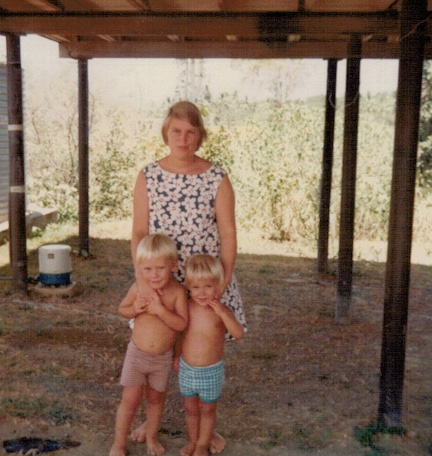
The town did have a small House Sick or hospital and a pub. My role was Roading Supervisor for PNG Timbers. The company owned two Caterpillar D7 dozers and a Drumco grader, which was used in the bush area, a D6 dozer and a 966 loader, which worked around the sawmill, and another 966 loader in the bush to load logs on the three company-owned log trucks which provided between 100cm and 150cm of saw log to the mill daily. Most of the timber was exported. The company employed approximately 80 people between the sawmill and bush operations.
It was customary that when you knocked off work, you had to go to the company-owned bar for a drink at the sawmill. They had a rule, no hats were to be worn in the bar. I was usually last to get there, travelling in from the bush. On my first visit, I forgot to remove my hat, so I had to shout at the bar that night. It cost me 87 stubbies during my first week as I forgot to remove my hat on several occasions. So, in the end, I wrote myself a note and pinned it to the dash of the Toyota, “REMOVE HAT BEFORE ENTERING BAR”.
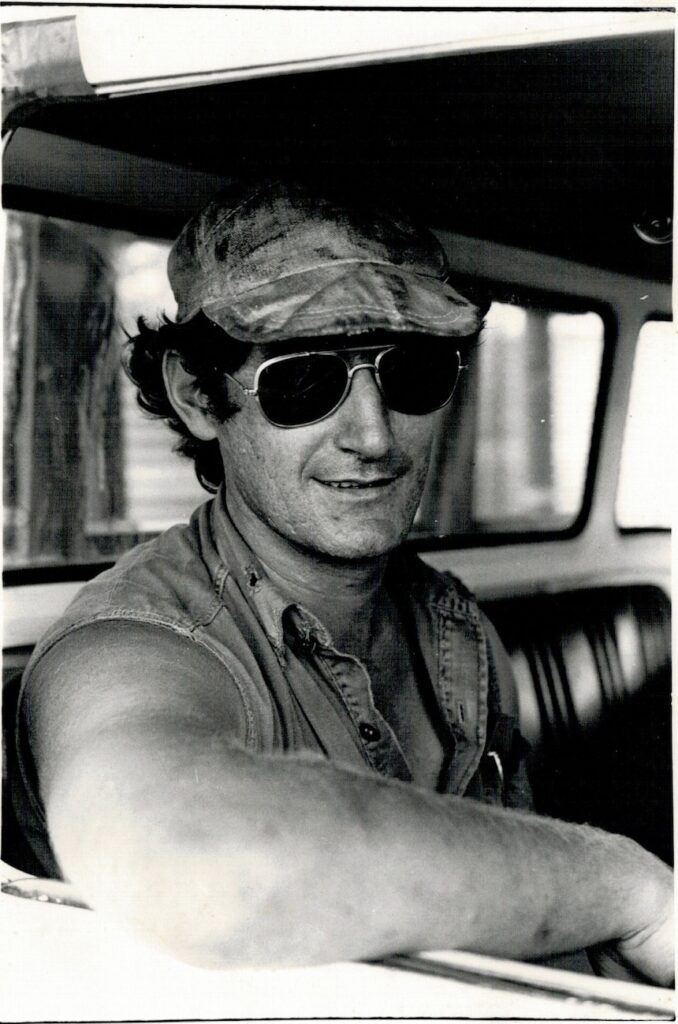
After some initial negative thoughts, my family came to enjoy our two and half years in PNG. I even learned to speak pretty good pidgin English, and the experience I gained there would have taken me ten years elsewhere.
Roading Supervisor
On returning home from PNG at Christmas 1979, I was given the choice of operating machinery or joining the staff as a Roading Logging Supervisor. It was an easy choice after the experience I gained whilst in PNG. Although I had to supervise old friends and workmates, the job came with some challenges, but we did work through them and eventually earned the respect to succeed. My first role was supervising some logging operations in the Huskisson Valley and clearing Bastyan and Macintosh Dams for the Hydro Electric Commission (HEC).
Around the mid-80s, after the Roading Supervisor Tena Bester retired, I was promoted to his position, responsible for locating and constructing roads, road maintenance, material extraction and special projects. The roading infrastructure comprised around 1,600 kilometres on AFH freehold and approximately 350 kilometres on Crown land, mainly in the north-west of Tasmania. Maintenance work was ongoing, concentrating on current logged areas at the time. There was new road construction of between 40 and 50 kilometres per year and the procurement of approximately 100,000 cubic metres of surfacing materials each year. We also had over 50 bridges throughout the network with an ongoing maintenance program, which had to be monitored.
We extracted materials using a D9 dozer, aided by a drill rig when required. Road construction was done with D7 and D9 bulldozers, a grader and a drill rig, all owned and operated by AFH and its employees.
AFH also owned a crushing plant previously owned by my earlier employer, Perc Reynold. It was not only used for crushing roading materials but, at times, was contracted out to HEC.
The delivery of surfacing materials for new construction was mostly done on a contract basis but was levelled by a D6 dozer and grader owned by AFH.
A significant change came in the mid-1990s when the company decided to sell its machinery and carry out operations through contracting services. Some company employees were offered the chance to buy into their machines and work on a contract. One employee, Ian Cumming did this by purchasing the two graders and ran a very successful business. He also employed others that had worked for the company. Other operators went on to work for company contractors, so we managed to hold onto some critical expertise.
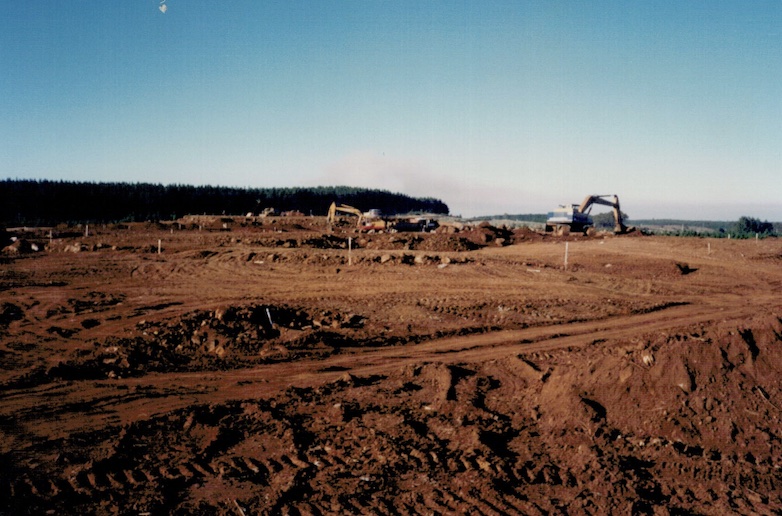
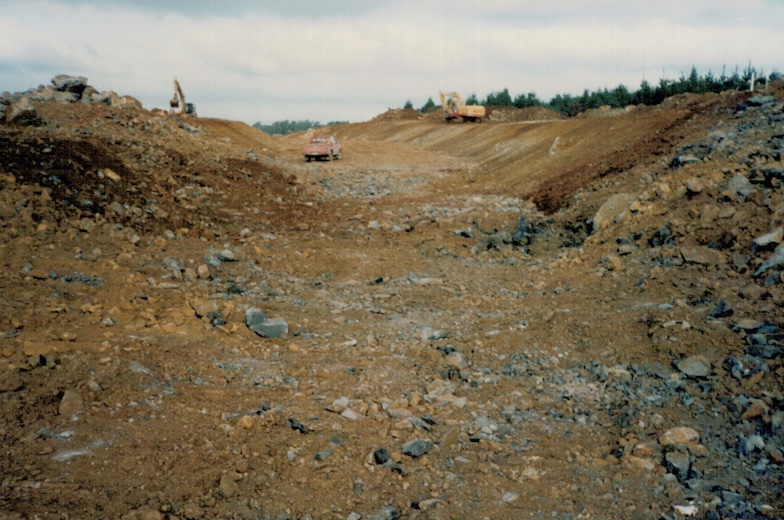
Other projects
My time with AFH was never dull. I was very fortunate to be involved in the normal roading activities and other major projects. This included putting all the old spur roads in the Parrawe area to bed by removing the old corded and log culvert crossings, as part of handing back the 1926 Concession to Forestry Tasmania; clearing of HEC dam sites on the west coast, such as Macintosh and Bastyan Dam and Lake Rosebery; locating, costing and constructing the 11 kilometres of railway line to the Hellyer Mine; earth works for the construction of the Hampshire wood chip mill; earth works for the construction of the Somerset nursery; construction of a road up the eastern side of the steep slope to link B Deck with the Massy Greene Sawmill, which was later was upgraded to become the new truck route allowing heavy vehicles to bypass Burnie from the west coast; construction of seven kilometres of Council Road from Woolnorth to Marrawah, a joint venture project between the AFH, the Van Diemen’s Land Company and the Smithton Council; costings of a road network in New South Wales for pine logging to be shipped out of Port Kembla, costing of road construction from the South Arthur to the Hampshire wood chip mill which would have followed a lot of old roading networks from the old days (this didn’t go ahead).
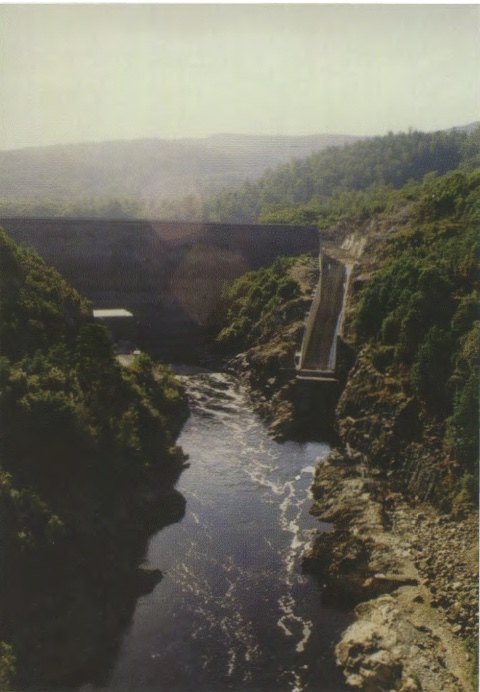
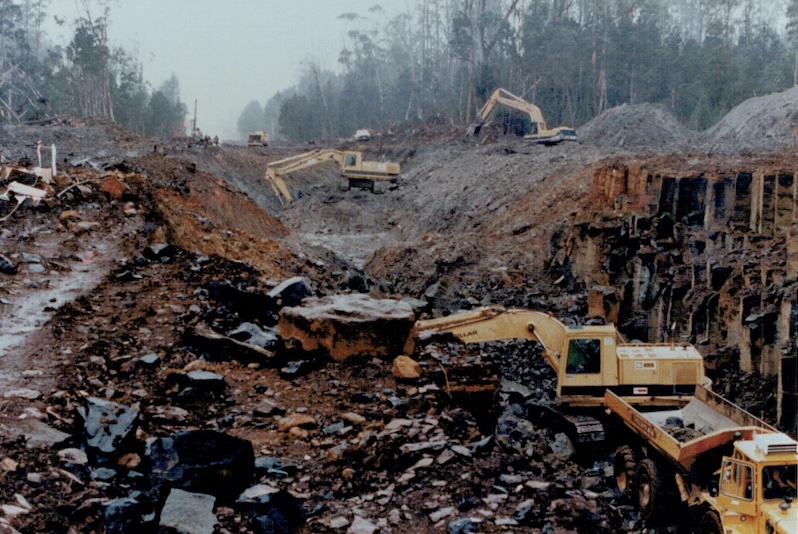
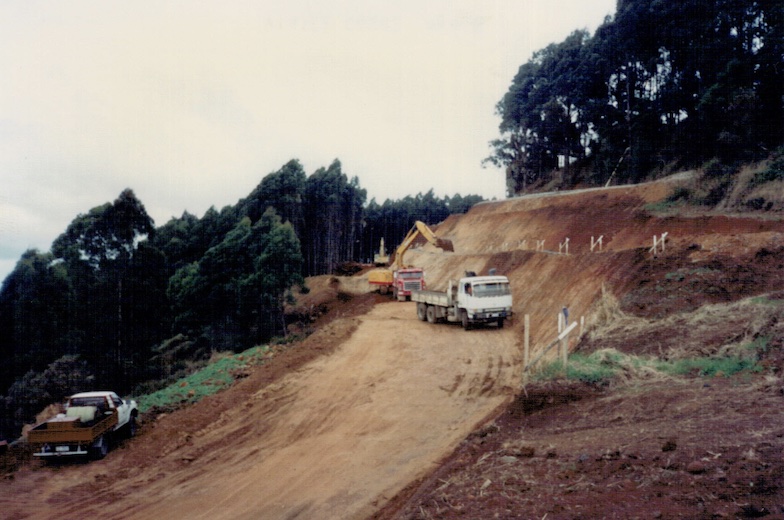
On retiring in late 2009, I was asked by Gunns if I would supervise the construction of a road into the proposed Bell Bay Pulp Mill site at Longreach. I was employed as a contractor where I costed the project and administered the contract when it started.
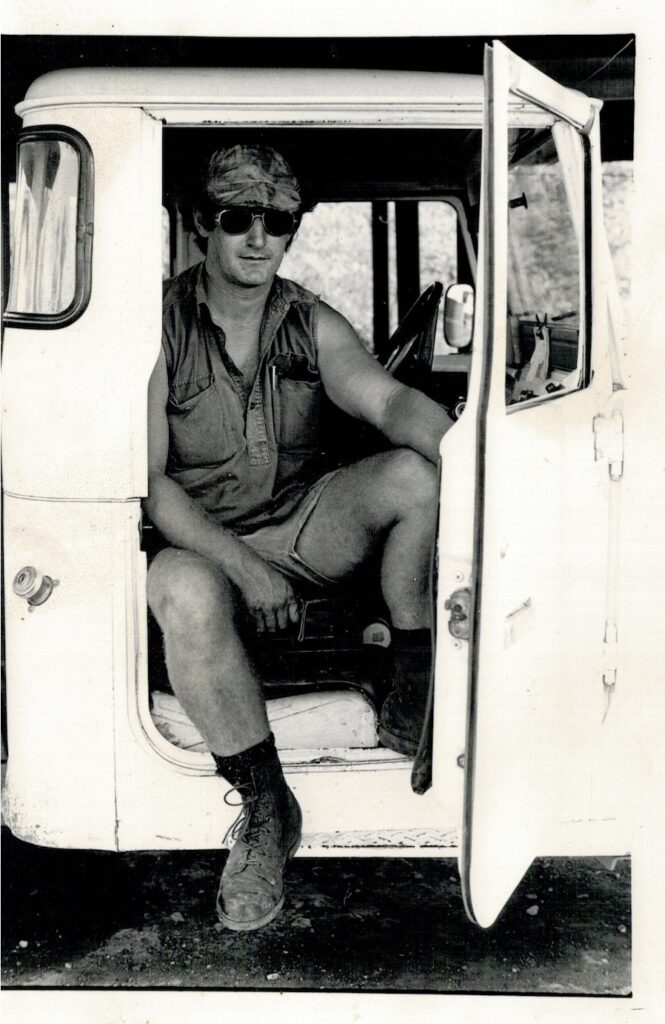
Enjoy all your stories thank you.
What a great read. You just never know when you might be driving on one of Morris’s roads.
Nice work Mort, great working with you.
Enjoyed reading this interesting story.
Good to read your story Morris.
Was great working with you.
A great story, Mort, and too good not to be told. Some great photos too. I had the pleasure of working with you and some of your contractors (for example Leo Butler and Leon Russell, if I remember right) on the bulk earthworks for the Somerset Nursery project. An enjoyable experience for me to see the maestro in action.
Robert, the Cethana Rd extension built into the private blocks above the dam has a switchback or two. How did you and Barry get away with them?
Ian that was solely Barry’s project with Mort. I came along after the roads were built. I may have used that as an example when Mort would flatly say “I don’t do switchbacks”!
Excellent read and pics Mort.
Would like to just say in the preamble – Mr Onfray admits to some sketch costings. This never happened in NE or SE😇😇😉😀
Loved the story Mort. Pics of the camp caravans gave me some special memories of Tipp and myself camped at the stock yards on school holidays.
Merv and Bessty would come and visit us to see how the fishing was going. Tipp finally woke up. “Hello” dad has sent them to check on us. Good thing they did. Tipp had boiled the billy on the stove and decided that’s f*@n hot and dropped it on my foot.
Merv and Bessty drove me to hospital with the heater going flat out. Falcon ute with the heater going, not good. On the up side I didn’t have to do exams at school
As usual a very interesting read especially as I know, or have worked with, some of the people mentioned; namely Frank Sheridan, the Radford boys, Merv Pyke and Jack Martin who worked for Bill Singline earlier.
Good work.
Thank you Robert for taking the time to put my story up. When I started putting a few thoughts on paper, I was surprised how quickly it all came back to me.
There are so many great stories out there keep up the good work.
Mort
Great memories Mort they were the good times
Merv gave me a go on the D9. I was 13, and will never forget that. 👍👍👍👍
Thanks Mort!
Some great memories – looking forward to ongoing stories on the “Faces that shaped Surrey Hills and the 1926 Concession” – there are many great personal stories to be told.
Thanks Mort for that great story of wonderful bushmen and your road crews who made such serviceable roads that have lasted for years.
Great to hear of some old friends now passed, but as you have said, are the true pioneers of some wonderful times.
Thanks again for letting us relive these times with your story.
Very well written Mort.
It is a pleasure to have been friends and workmates since a very young age.
Guess we both drove trucks before being licensed.
Thanks Mort for answering my questions at work 6:30am. Always so interesting.
A good life and a good read Morris. Many can look back with pride at your achievements.
Regards Dennis.
Hi Mort,
What great times, I had the pleasure of working with you on many of the projects you mentioned, plus many many others.
Some great times and great memories. Above all great people. What a wonderful pool of experience and resources we had at our disposal.
Great friend always.
Great article Mort – will be in touch re PNG.
John and Rosemary Hogg.